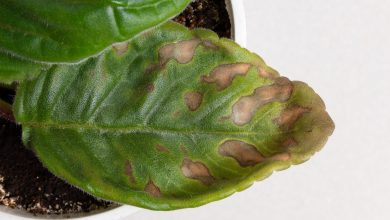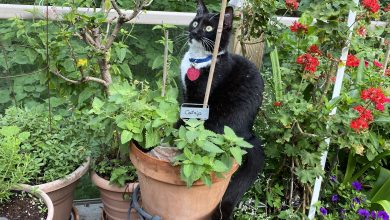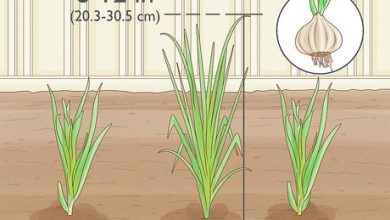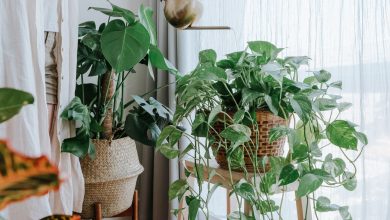Jade Tree or Jade Plant: [Cultivation, Care, Substrate and Irrigation]
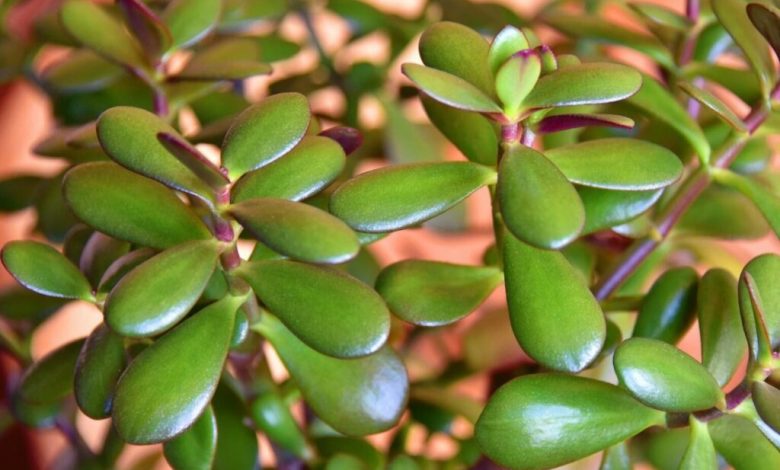
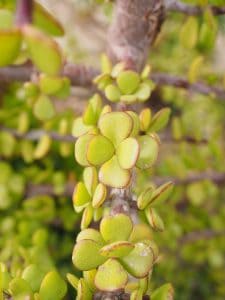 The Jade Tree (Crassula ovata) or Jade plant is one of the most sought after ornamental plants because it is known as the plant of money and friendship, it is said that it brings good luck and that is why we see it at the entrance of restaurants and business offices.
The Jade Tree (Crassula ovata) or Jade plant is one of the most sought after ornamental plants because it is known as the plant of money and friendship, it is said that it brings good luck and that is why we see it at the entrance of restaurants and business offices.
It is also an excellent houseplant.
It has thick branches and a fleshy texture of a jade green color, very resistant, and it grows very well inside the house where its beauty will notably contribute to making the environment more pleasant.
Its flowering –beautiful white and pink flowers that simulate stars– takes place at the end of winter and beginning of spring.
Characteristics of the Jade Tree
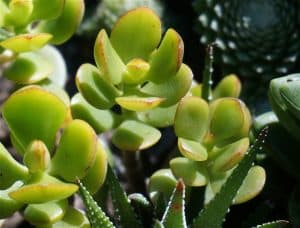 Jade can reach a meter in height, its growth is slow, so we must have a lot of patience and take care of it carefully, because in the end we will obtain the reward of a plant of enormous beauty.
Jade can reach a meter in height, its growth is slow, so we must have a lot of patience and take care of it carefully, because in the end we will obtain the reward of a plant of enormous beauty.
In addition, it is one of the most used plants for Feng Shui practices. In this sense, it is recommended to place it in the east of the house for family harmony, health, the initiation of projects and academic activities.
To the southeast for wealth luck, good business and better income. To the west for creativity or the luck of children.
And northwest for the luck of mentors, teachers, and helpful people in general.
One of the species of jade is the bonsai, a dwarf plant that needs intense care, which is defined as the plant of friendship and money.
Temperature: Where to plant Jade?
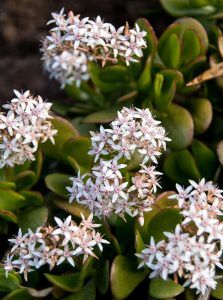 It is a plant whose care does not present major problems, as it is resistant to temperature changes.
It is a plant whose care does not present major problems, as it is resistant to temperature changes.
Cold nights favor the flowering of jade, so it is recommended to place it in the coldest area of the house or outdoors in late fall and early winter, only if the temperature is above 5ºC; This should never be done if there are intense frosts because its leaves are damaged.
It can also be grown at normal temperatures, but extreme heat should be avoided, which, like frost, damages its leaves.
The ideal temperature for its happy growth is between 10ºC and 15ºC.
The Jade tree must be taken care of extremely, and its flowering takes a long time to occur, in some cases up to ten years.
Jade bonsai should also be grown at temperatures above 5ºC.
Luz: What needs does the Jade tree have?
The jade pot should be placed in places that offer light, but should not be exposed to direct sunlight, because the leaves could suffer irreversible burns.
As we have indicated before, depending on the beliefs of each family, the jade will be placed in different parts of the house, except in the bathroom and the bedroom.
Contrary to the normal jade plant, the jade bonsai can be placed in the sun during the day, because it needs the open air for its development.
Substrate and fertilizer: How do we prepare the land?
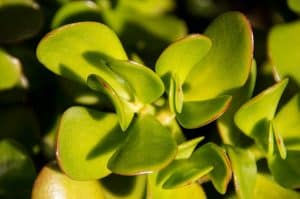 Jade grows satisfactorily in any pot; it does not need to be replanted, except every three years, but the soil conditions must be good for its optimum development.
Jade grows satisfactorily in any pot; it does not need to be replanted, except every three years, but the soil conditions must be good for its optimum development.
For the plant to be well nourished, experts recommend worm humus or compost; also, the fertilizer for African violets in order to achieve a good fertilization.
Fertilization should be done once a month from spring to summer, never in autumn and winter.
How to plant a Jade tree
- Choose a wide, sturdy pot with a moderate depth, as jade plants have a tendency to grow top-heavy and topple over.
- Use soil that drains completely, as excessive moisture can promote fungal diseases like root rot. An all-purpose potting mix will work, though you’ll need to mix in additional perlite to improve drainage. A 2:1 ratio of potting mix to perlite works well.
- Alternatively, use a ready-made succulent or cactus potting mix.
- After planting a jade plant, don’t water it right away. Waiting several days to a week before watering allows the roots to settle and recover from any damage.
Watering: How often and how do we water the Jade tree?
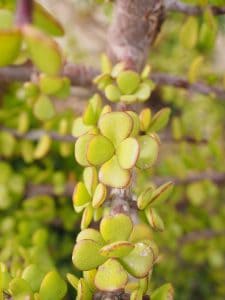 As a succulent plant, which stores water in its leaves, Jade can withstand some time without watering.
As a succulent plant, which stores water in its leaves, Jade can withstand some time without watering.
It should be watered moderately when the soil dries out in summer. In spring, irrigation should be applied every fifteen days, although the possibility of watering it once a month is at our discretion, avoiding at all costs the substrate being flooded.
We must do it only when the substrate is dry, letting the water drain through the drainage hole, avoiding at all costs to flood it.
Similarly, although Jade blooms in late winter and early spring, under good conditions it can produce flowers year-round.
As a good way to stimulate its flowering, it is recommended not to water it in the fall.
The soil should remain moist, but not extremely moist, because overwatering can rot the roots and kill the plant.
The Jade bonsai should be watered little because it retains water in its leaves and it is necessary to let it dry between waterings.
Jade Plant Care
Jade plants need at least 4 hours of direct sunlight each day. Young plants should be kept in bright, indirect sunlight; large, well-established jade plants can handle more direct sunlight.
Kitchens and offices with a south-facing window usually get enough light, as do west-facing windows.
Jade plants grow best at room temperature 17°C to 25°C, but prefer slightly cooler temperatures at night and in winter.
Note: Jade is not frost tolerant, so if you keep it outside during the summer, be sure to bring it indoors once temperatures start to drop to around 10°C in the fall.
Jade Tree Pests and Diseases
Mealybugs
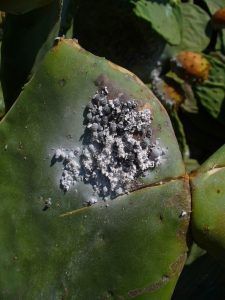 Mealybugs or scale can hide under stems and leaves. To remove pests, use a water spray or gently wipe the bugs with a little rubbing alcohol on a paper towel or cotton swab.
Mealybugs or scale can hide under stems and leaves. To remove pests, use a water spray or gently wipe the bugs with a little rubbing alcohol on a paper towel or cotton swab.
It will be necessary to repeat the applications to eliminate the offspring of the pests. If the plant is heavily infested, it may be best to make a clean cut of it and start over.
Green solutions are usually neem oil or potassium soap.
mildew fungus
Powdery mildew can be a problem, but it’s fairly uncommon indoors.
root rot
Root rot is caused by excessive soil moisture. Let the soil dry out between waterings.
wrinkled sheets
Wrinkled or wrinkled leaves are signs of a thirsty plant that needs more frequent or deeper waterings.
soft leaves
Waterlogged and soft leaves indicate that the plant is receiving too much water.
leaf fall
Leaf drop is also a symptom of watering problems.

